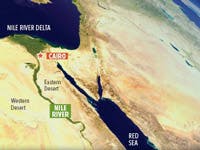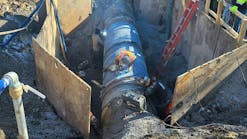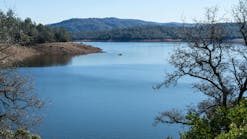Xylem monitoring technology helps protect Nile River from pollution
EGYPT, DEC 26, 2018 -- The Nile supplies 95 percent of Egypt's water, irrigating the nation's crops, powering its industry and supplying nearly all of the nation's 99 million people. Along its 6,600-kilometer (4,100-mile) path through deserts, farms and cities, the Nile delivers precious water, but it also picks up massive loads of pollutants.
"Running through a heavily populated city like Cairo has its own challenges on this important body of water: illegal discharge of untreated waste from factories, pollution caused by boats and ships, and human behavior," says Hassan al Salem, Xylem's YSI analytics expert for the Middle East and Africa.
Along the river's path, infestations of canal-choking aquatic weeds slow the movement of water. High temperatures, abnormal pH values, high levels of dissolved organic matter (DOM), chemicals from poorly treated industrial wastewater, and sewage add to the challenge, adds Mohamed abd Elnasser, after-sales and technical support engineer for Giga Systems, a Xyelm's YSI partner based in Cairo.
Legislation To Require Wastewater Monitoring In Real Time
"These pollution sources eventually cause a lot of diseases to the citizens, such as kidney and liver failure," abd Elnasser says. "These diseases cost the country millions of [Egyptian] pounds and affect the Egyptians' capability to live normally."
Pressure on the government began mounting to curb pollution as water quality continued to degrade in recent years, al Salem notes.
"Existing laws didn't enforce legal actions against damage to the environment until recently, when the pressure on water quality increased," abd Elnasser explains. "Therefore, the government took major and ambitious steps to establish laws, as well as a monitoring network on the Nile."
The country's parliament passed environmental legislation that will require every industrial facility to monitor its own wastewater quality in real time and report the data to the Ministry of Environmental Affairs, says abd Elnasser. The laws are currently being reviewed by the minister.
Xylem's YSI Sondes Send Water Data Via Cell Signal
While rules requiring dischargers to monitor their wastewater work their way through the government, the ministry has begun a sweeping effort to conduct its own continuous monitoring effort.
Dr. Sayed Mostafa, head of the Central Water Quality Administration of the Egyptian Ministry of Environmental Affairs, leads a continuous water quality monitoring program that currently covers nearly 1,000 kilometers (620 miles) along the Nile with 20 monitoring stations. The program, which began in the middle of 2015, started in the upper Nile and has been extending north toward the delta over time.
Each monitoring station is equipped with an EXO2 multiparameter sonde from YSI. Every 30 minutes, the sondes capture measurements of a wide range of water quality parameters including temperature, conductivity , salinity , total dissolved solids , dissolved oxygen (DO), pH, and florescent dissolved organic matter (fDOM). Data are conveyed to the Ministry of the Environment via cell signal.
"Continuous monitoring in a 30-minute time interval made it better to catch any short-period event that is likely to be missed if the same sites were monitored in traditional, discrete ways," abd Elnasser says. "Monitoring different parameters at the same time can give some patterns of dependencies between different parameters, can give data more meaning, and can be used as a means of discarding non-logical data and spikes."
Building Awareness Of Pollution On The Nile
Data from the string of water quality monitoring stations has already had a range of benefits, starting with getting a handle on the levels and types of pollution along various reaches of the river.
"The main reason is to realize the effect of these pollution sources, to have evidence of any violations, and to track the action taken to minimize these bad behaviors and the results of applying regulation," says abd Elnasser. "Another reason is to use the data as a valuable source in research."
According to Dr. Sayed Mostafa, dischargers near the water quality monitoring stations have become more conscientious about the quality of water they release into the river – even before the new laws take effect.
Sending Data With Radio, Cellular Or Satellite Modems
Giga Systems teamed each sonde with a Storm3 data logger to maintain a steady flow of data from the field into the ministry.
"The Storm3 data logger gives us the ability to choose from radio, cellular or satellite modems and antennas," says abd Elnasser. "The integrated GSM-GPRS suits us the best because the monitored stations are distributed all over the country and using cell modems is less expensive than satellite.
"We rely on Storm Local software for collecting data from all monitored sites because it is a point-to-point connection and makes it more secure than uploading data to the cloud," he says, adding that other users may find the cloud more flexible for data-sharing arrangements.
Monitoring That Leads To A Brighter, Cleaner Future
Abd Elnasser anticipates that as the Nile water quality monitoring network expands, the ministry may benefit from a software package to query and analyze meaningful information from a massive amount of data.
But like hundreds of generations of Egyptians, his focus is on the great river itself. He hopes the monitoring program will create meaningful change in the health of the Nile.
"The Nile was, still is and will always be the source of life to Egypt," says abd Elnasser. "Maintaining it in a good condition is a vital issue to Egypt."




